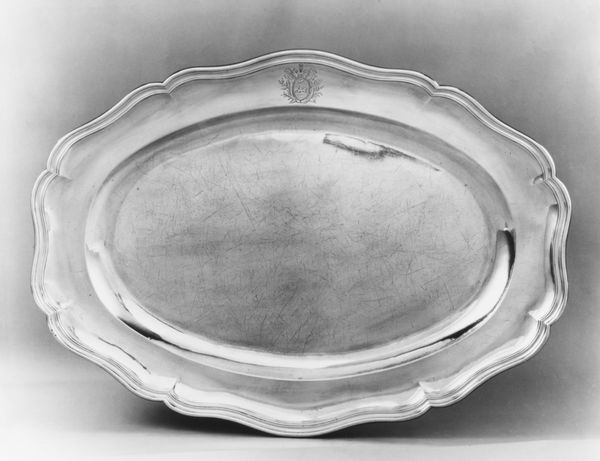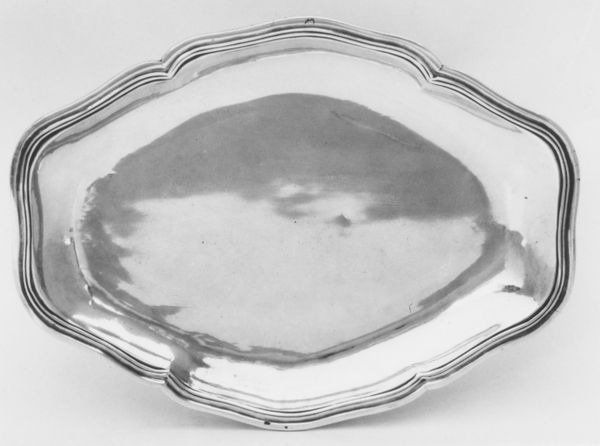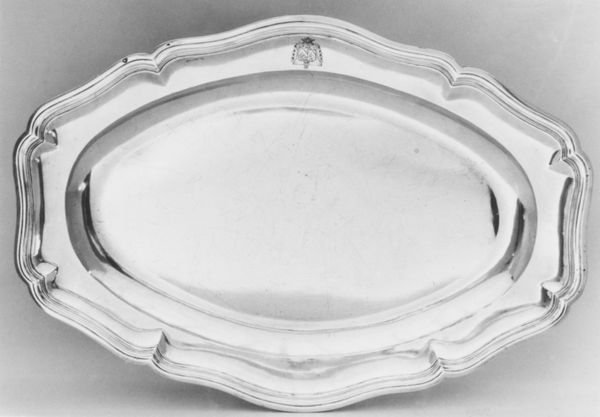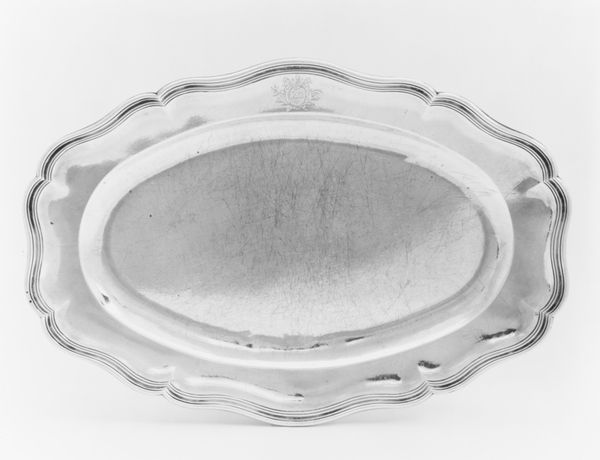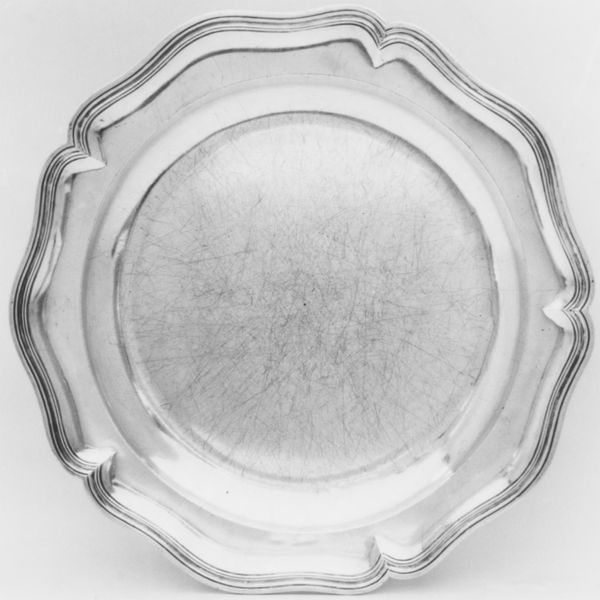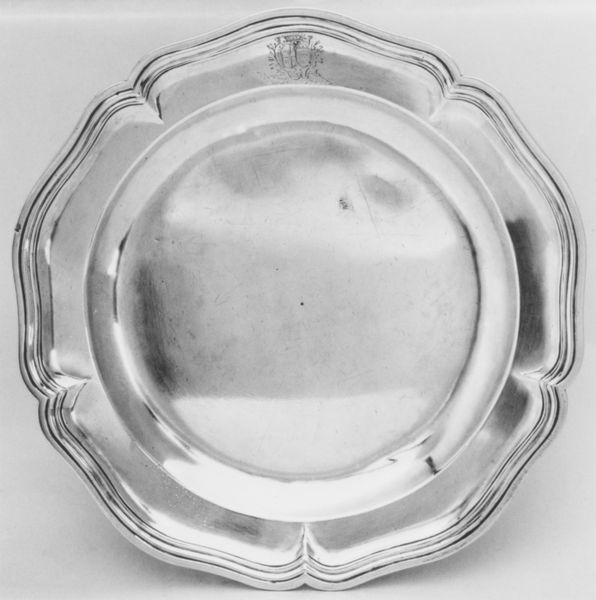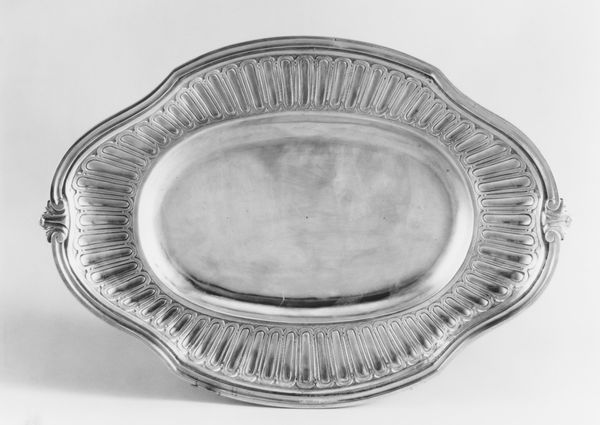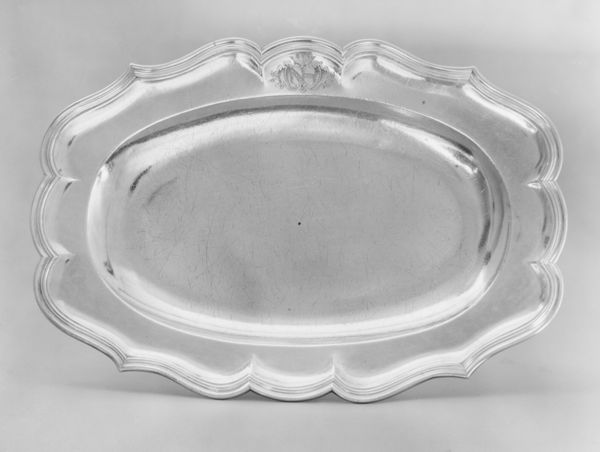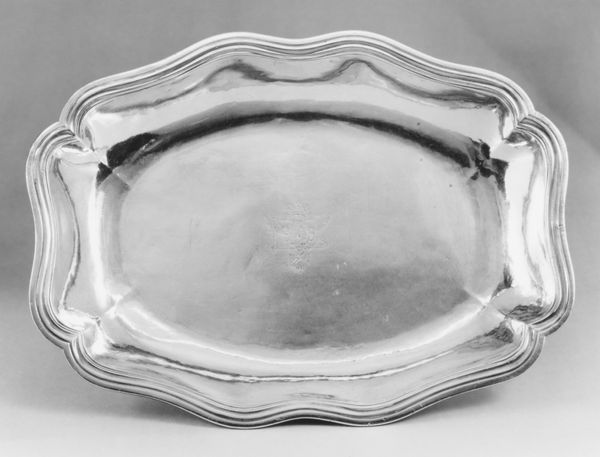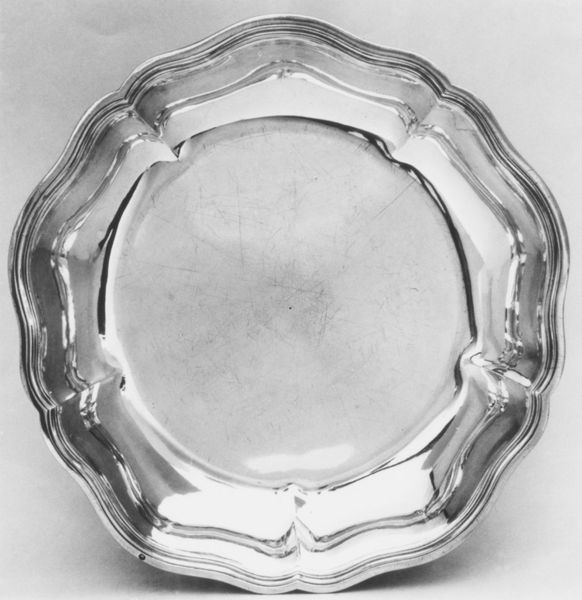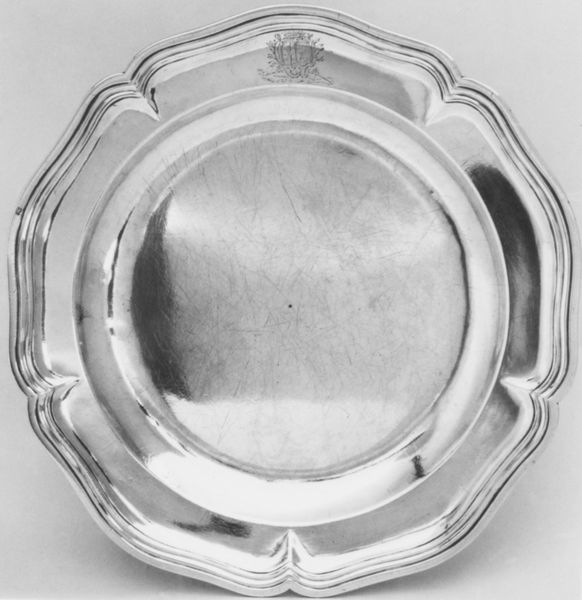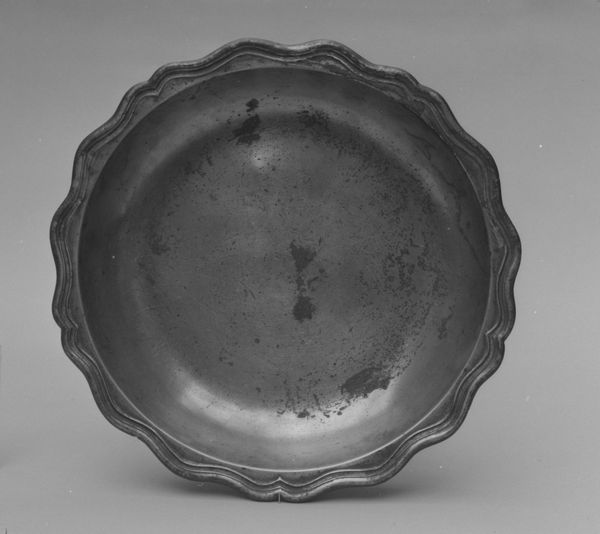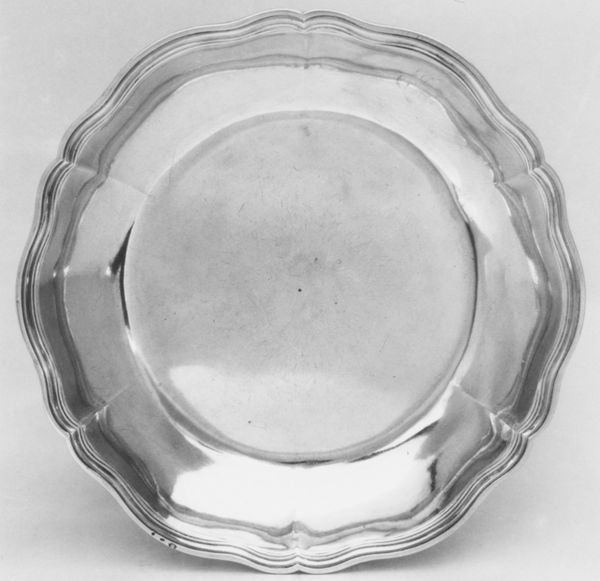
silver, metal, metalwork-silver, sculpture
#
silver
#
metal
#
metalwork-silver
#
sculpture
#
decorative-art
Dimensions: Overall: 3/4 × 6 1/4 × 9 1/4 in. (1.9 × 15.9 × 23.5 cm)
Copyright: Public Domain
Curator: Well, hello, and welcome. Today, we are looking at a "Tray," crafted in 1785 by Denis Lachèse. The piece resides here at the Metropolitan Museum of Art. Editor: Its reflective surface immediately grabs the eye, like a still pool of water reflecting light. There’s a satisfying symmetry to its oval form, a clean elegance to its contours. Curator: Lachèse rendered this tray using silver. What is striking about pieces such as this is how functional objects took on luxury forms. Silver during this period spoke to the rise of specific trades and skilled artisans as essential labor within burgeoning European marketplaces. Editor: Yes, the choice of silver isn’t merely aesthetic. Its gleam denotes status and wealth. Silver objects played important social roles during that era. Who might have used this tray and within which settings? Did the patrons’ status dictate design choices such as its refined contours and seemingly unadorned nature? Curator: Indeed. Objects like this are useful tools to see into the material lives of individuals. And considering its decorative simplicity, one is reminded that in pre-industrial production, what is considered “simple” might have required many specialized forms of labor. Each ridge around the edge demanded not just skill, but also specific tooling and repetitive movements. Editor: I agree. It prompts one to ponder on the social life surrounding the tray—what was being served, what kind of exchanges were taking place around it, and even what specific trades provided access to raw materials for its manufacture. Curator: These trays also suggest certain political dimensions through production and consumption practices, and they illustrate the importance of institutions in preserving decorative objects as witnesses to the cultural past. Editor: In its way, such an artifact connects us, rather tangibly, to the tastes and skills that informed elite culture and material creation of the past. Curator: Absolutely, the tray as both historical object and material form really allows us insight into a certain class of manufacture, while inviting deeper inquiries into historical consumption.
Comments
No comments
Be the first to comment and join the conversation on the ultimate creative platform.
